Old Kyoto: The Updated Guide to Traditional Shops, Restaurants, and Inns
Diane Durston
Down the cobbled paths and behind the tranquil noren curtains of Kyoto, the old way of life goes on, nurtured in the restrained furnishings of the traditional inns and in the old shops where fine handmade items still add a touch of quality to life.
Since the first edition appeared in 1986, this lovingly written travelogue-cum-guidebook has become de rigueur for knowledgeable travelers seeking to find "the real Kyoto" behind the modern face of the city's constantly changing boulevards. OLD KYOTO focuses on the family establishments that have been in business for at least a hundred years, and in some cases for over ten generations. Astonishingly, many of the old shops and inns of Kyoto can still be found on narrow backstreets, under the heavy, tiled rooftops of traditional machiya dwellings. Here, the adventurous traveler will uncover treasures: the way in which a hand-crafted calligraphy brush is bound, a miniature garden tended, a bamboo basket woven.
For critics and travelers alike, OLD KYOTO has long been regarded the essential guidebook to Japan's most cherished city. This second edition of OLD KYOTO is completely updated. Shops have been added, and maps, prices, directions, descriptions, and general information have all been thoroughly revised.
4770029942
Release 2.1
Esther Dyson
This is noted digerati Esther Dyson's "upgrade" to Release 2.0, her guide to life in a wired world. Geared to the Net newbie, Dyson discusses the changes that the Internet has imposed on many areas of our lives, such as work, communities, and education. She is optimistic about the growth of the Internet and addresses skeptics' concerns about the future of online privacy and security issues, ownership of online content, governance of cyberspace, and more.
Much has happened since the first edition of Dyson's book was published in 1997, and she smoothly blends her updates into the original manuscript. The most notable changes to the book reflect the growth of e-commerce. Dyson follows the progress of the original eight companies profiled in 2.0 and introduces five new Internet business pioneers. She also charts the advances in privacy and security tools, the backlash against spam, and the overturning of the Communications Decency Act (which occurred shortly before the publication of her first book). In this version, Dyson also excerpts e-mail comments and articles from her Web site (www.edventure.com) to support the statements in her text.
Seasoned netizens may find that they're familiar with many of the controversies in this plan for the digital age, but newcomers will find it to be a valuable guideline to our changing way of life. —Cristina Vaamonde
076790012X
Rustic European Breads from Your Bread Machine
Linda West Eckhardt, Diana Collingwood Butts
From the award-winning authors of Bread In Half The Time comes a complete guide to close to a hundred European-style breads to bake with the indispensable aid of your bread machine.
Nothing smells quite as wonderful as bread baking in the oven. Nothing tastes quite as good as a thick slice of still-warm homemade bread. And nothing can be quite so intimidating or time-consuming as mixing, kneading, raising, and baking that bread. Until now!
With a bread machine to do all the hard work, and experts Linda West Eckhardt and Diana Collingwood Butts as guides, anyone can turn out a perfect sourdough, raisin pumpernickel, focaccia, or any one of almost a hundred other varieties of classic European breads. The trick is to use the machine for what it does best-mixing and kneading the dough that produces the loaves we all love so much. Then leave it in the machine to rise, shape it by hand, and bake it to perfection in the oven.
With Rustic European Breads From Your Bread Machine in hand, every home cook will become a master baker. Eckhardt and Butts provide not only an encyclopedic knowledge of their subject and foolproof step-by-step recipes, but also limitless, contagious enthusiasm. Their clear and thorough explanations will turn every home kitchen into an aromatic, soul- and appetite-satisfying European bakery.
0385477775
Bon Appetit: Keep It Simple: Easy Techniques for Great Home Cooking
Bon Appetit Editors
America’s most popular cooking and entertaining magazine goes back to the basics with more than 175 recipes for simple, satisfying dishes guaranteed to evoke the sheer pleasure of cooking. From eggs to salads to vegetables to side dishes to meats—and, of course, every kind of delectable dessert — each chapter in Bon Appétit: Keep It Simple offers classic recipes, followed by exciting variations. You’ll find hints on how to streamline the preparation process, advice on buying the right equipment, and step-by-step instructions that show you the right way to beat egg whites for a soufflé, degrease a pot of stock, or caramelize crème brûlée. Designed for cooks of all levels and illustrated with beautiful color photography, Bon Appétit: Keep It Simple offers recipes like Wild Mushroom Risotto; Garlic, White Cheddar, and Chipotle Mashed Potatoes; Roast Beef with Root Vegetables; Peppery Fried Chicken; Peach-Pecan Ice Cream Pie with Caramel Sauce; and Sour Lemon Bars. And in addition to the scrumptious recipes, there are tips and techniques even the most accomplished cook can appreciate, whether it’s a refresher course on folding the perfect omelet or a review of the different rises for yeast breads.
140004636X
The Flavors of Bon Appetit 2000
Bon Appetit Editors
Deviled Eggs with Curry. Flourless Chocolate Cake with Chocolate Glaze. Rib-Eye Steaks with Béarnaise Butter. Orange and Roasted Garlic Shrimp Skewers. Ginger and Vanilla Bean Crème Brûlée. What do these irresistible recipes have in common? They are all signature dishes featured in The Flavors of Bon Appétit 2000, a special collection of the magazine's best recipes.
In this delicious look back at 1999, you'll discover the tastiest trends the year had to offer. Take simple and comforting one-dish suppers, for example. Popular years ago, these easy, all-in-a-pot stews have made a comeback recently, looking and tasting better than ever. Be sure to try the Beef Stew with Herbed Dumplings or the Chicken, Shrimp and Sausage Paella.
Convenience is a hot topic as the century turns, specifically top-quality, ready-made ingredients that make dinner a snap. A terrific bottled barbecue sauce works as well as any made-from-scratch sauce in the Kansas City Spareribs, while canned tomatoes with Italian herbs are a great start for a flavorful sauce in Pasta with Roasted Provençal Vegetable Sauce.
Another trend that isn't so much new as it is gaining strength is our curiosity about all things healthful. Good-for-everyone greens, especially, have become almost commonplace of late. If you haven't yet experimented with robust kale or Swiss chard, be sure to try Spicy Rice and Kale or Orecchiette with Greens, Goat Cheese and Raisins, a delicious pasta dish.
That interest in the healthy side of eating hasn't stopped us from the occasional splurge, ideas for which are in abundance here. If it's a savory indulgence you had in mind, take a look at the Beef Medallions with Cognac Sauce; if it's something sweet you've been dreaming of, there's Peanut Butter and White Chocolate Cream Pie, among other temptations.
Also included in these pages are delicious souvenirs from Bon Appétit's journey to sun-kissed Provence, among them Roast Leg of Lamb with Potatoes and Onions, as well as recipes from a special millennium issue called "The American Century in Food." That decade-by-decade look at the best of American cooking over the past hundred years takes the shape of an add-on section at the end of this book—a bonus that comes with updated versions of everyone's all-time favorites, including a deliciously modern take on macaroni and cheese: Three-Cheese Pasta Gratin with Almond Crust.
In addition, this volume is packed with informational sidebars, useful do-ahead advice, and menus to make meal planning easy, whether you're cooking for a big party or a weeknight dinner. Add to this the 200-plus recipes and more than 125 luscious photographs that fill every page and you have a book for now and the future.
0609607146
|
Flavors of Bon Appetit 2001
Bon Appetit Editors
With recipes such as Shrimp and Sweet Potato Cakes with Chipotle Tartar Sauce; Pan-seared Steaks with Goat Cheese, Caper, and Tomato Butter; and Apple and Caraway Tartlets with Cider-Caramel Sauce, new and interesting dishes will always be at the ready thanks to The Flavors of Bon Appetit 2001. These easy-to-prepare yet sophisticated recipes are divided into the sections Starters, Main Courses, On the Side, and Desserts, assuring that something delicious can be found for every part of the meal.
Returning for the second year running is the special section "How America Eats.” Based on an annual survey done by the magazine, it presents information and recipes on current trends, such as the popularity of asparagus — America’s favorite vegetable.
Featuring a fresh new design, a wide variety of recipes, and easy-to-follow instructions, The Flavors of Bon Appetit 2001 is sure to inspire.
0609609203
The Flavors of Bon Appetit 2002
Bon Appetit Editors
The newest edition in the annual series from America’s most popular culinary magazine shines a spotlight on the latest trends in cooking and eating—with more than 200 recipes, menu suggestions, and more.
The editors of Bon Appétit take readers to the forefront of the culinary world in this beautifully illustrated collection of the most interesting and tastiest ideas to emerge in the last year. Designed for cooks at all levels, The Flavors of Bon Appétit 2002 offers easy-to-follow recipes, cooking tips and lore, and expert advice on putting together meals that highlight contemporary cuisine at its best. From sophisticated party dishes to up-to-date versions of family favorites, to unusual treats from around the world, there’s something here for every occasion. Among the many palate-pleasers are such starters as Chicken Kumquat Spring Rolls with Hoisin-Chili Sauce and Blue Cheese and Caramelized Shallot Dip; main courses like Slow-Baked Spare Ribs with Mango-Chutney Marinade; surprising side dishes like Potato, Celery Root, and Fontina Gratin; and such completely satisfying desserts as Caramelized Nectarines and Ginger Shortcakes with Sour Cream. For the fans of Bon Appétit magazine and the previous books in this series and any cook looking for winning newcomers in the cooking repertoire, this handsome volume is essential.
0609610643
Torpedo: A Surface Warfare Thriller
Jeff Edwards
An accident at a German nuclear plant, an illegal arms deal, and a biological warfare attack on the British Embassy in Washington, DC, combine to ignite an international crisis that threatens to draw Western Europe, the Middle East, and the United States into all-out war. To prevent it, a handful of U.S. Navy destroyers and frigates must track down and destroy a Wolfpack of state-of-the-art submarines. The enemy is a NATO Ally: trained in U.S. naval warfare tactics, skilled in deception, and thoroughly lethal. Out-gunned, out-maneuvered, and out-thought, the crews of the U.S. Navy ships must become as devious as their enemies.
Edwards wields politics and naval combat tactics with a skill equal to the acknowledged masters of military fiction.
Military Press
[TORPEDO] is the Top Gun of Surface Warfare.
Barnes & Noble online customer review
As the former Commanding Officer of a U.S. Navy warship, I was awestruck by the realism and plausibility of this novel. Weve got to consider this scenario in the Global War on Terrorism.
David Armstrong, Commander, USN (Ret.)
TORPEDO kicks ass! Smart and involving, with an action through-line that shoots ahead like its namesakefast and lethal.
Paul L. Sandberg, producer of The Bourne Supremacy
0595325327
The Rough Guide to Spain
Mark Ellingham, John Fisher
INTRODUCTION
If you are coming to Spain for the first time, be warned: this is a country that fast becomes an addiction. You might intend to come just for a beach holiday, or a tour of the major cities, but before you know it youll find yourself hooked by something quite different by the celebration of some local fiesta, perhaps, or the amazing nightlife in Madrid, by the Moorish monuments of Andalucia, by Basque cooking, or the wild landscapes and birds of prey of Estremadura. And by then, of course, you will have noticed that there is not just one Spain but many. Indeed, Spaniards often speak of Las Españas (the Spains) and they even talk of the capital in the plural Los Madriles, the Madrids.
This regionalism is an obsession and perhaps the most significant change to the country over recent decades has been the creation of seventeen autonomías autonomous regions with their own governments, budgets and cultural ministries. The old days of a unified nation, governed with a firm hand from Madrid, seem to have gone forever, as the separate kingdoms which made up the original Spanish state reassert themselves. And the differences are evident wherever you look: in language, culture and artistic traditions, in landscapes and cityscapes, and attitudes and politics.
The cities above all are compellingly individual. Barcelona, for many, has the edge: for Gaudís splendid modernista architecture, the lively promenade of Las Ramblas, designer clubs par excellence, and, not least, for Barça the citys football team. But Madrid, although not as pretty, claims as many devotees. The city and its people, immortalized in the movies of Pedro Almodóvar, have a vibrancy and style that is revealed in a thousand bars and summer terrazas. Not to mention three of the worlds finest art museums. Then theres Sevilla, home of flamenco and all the clichés of southern Spain; Valencia, the vibrant Levantine city with an arts scene and nightlife to equal any European rival; and Bilbao, a new entry on Spains cultural circuit, due to Frank Gehrys astonishing Guggenheim museum.
Monuments range just as widely from one region to another, dependent on their history of control and occupation by Romans and Moors, their role in the "golden age" of Imperial Renaissance Spain, or their twentieth-century fortunes. Touring Castile and León, you confront the classic Spanish images of vast cathedrals and reconquista castles literally hundreds of the latter; in the northern mountains of Asturias and the Pyrenees, tiny, almost organic Romanesque churches dot the hillsides and villages; Andalucía has the great mosques and Moorish palaces of Granada, Sevilla and Córdoba; Castile has the superbly preserved medieval capital, Toledo, and the gorgeous Renaissance university city of Salamanca; while the harsh landscape of Estremadura cradles the ornate conquistador towns built with riches from the "New World".
Not that Spain is predominantly about buildings. For most visitors, the landscape holds just as much fascination and variety. The evergreen estuaries of Galicia could hardly be more different from the high, arid plains of Castile, or the gulch-like desert landscapes of Almería. Agriculture makes its mark in the patterned hillsides of the wine- and olive-growing regions and the rice fields of the Levante. Spain is also one of the most mountainous countries in Europe, and there is superb walking and wildlife in a dozen or more sierras above all in the Picos de Europa and Pyrenees. Spains unique fauna boast protected species like brown bears, the Spanish lynx and Mediterranean monk seals as well as more common wild boar, white storks and birds of prey.
One of Spains greatest draws is undeniably its beaches although with infinitely more variety than you would be led to believe from the sun-and-sand holiday brochures. Long tracts of coastline along the Costa del Sol, in particular have been developed into concrete hotel and villa complexes but delightful pockets remain even on the big tourist costas. On the Costa Brava, the string of coves between Palamos and Begur are often overlooked, while in the south there are superb windsurfing waters around Tarifa and some decidedly low-key resorts along the Costa de la Luz. In the north, the cooler Atlantic coastline boasts the surfing sands of Cantabria and the unspoilt coves of Galicias estuaries. Offshore, the Balearic islands have some superb sands and, if youre up for it, Ibiza also offers one of the most hedonistic backdrops to beachlife in the Mediterranean.
Wherever you are in Spain, you cant help but notice the Spaniards infectious enthusiasm for life. In the cities there is always something happening in bars and clubs, on the streets, and especially at fiesta times. Even in out of the way places theres a surprising range of nightlife and entertainment, not to mention the daily pleasures of a round of tapas, moving from bar to bar, having a beer, a glass of wine or a fino (dry sherry) and a bite of the house speciality.
The identity and appeal of each of the regions is explored in the chapter introductions, where youll find a rundown on their highlights, while in the following pages youll find a selection of the very best of Spain.
1858288703
Eyewitness Travel Guide to London
Jane Ewart
The essence of London, found "in the swing, tramp, and trudge; in the bellow and uproar; the carriages, motor cars, omnibuses, vans, sandwich men shuffling and swinging; brass bands; barrel organs; in the triumph and the jingle and the strange high singing of some aeroplane overhead..." (Mrs. Dalloway), is ably conveyed in the visual burst of Dorling Kindersley's London guide. This compact book is filled to overflowing with a montage of timelines, street maps, 3-D aerial views, district maps, cutaways of important buildings—including Buckingham Palace and Shakespeare's Globe Theatre—and more than 1,200 full-color photographs.
Like all of DK's books, this reference is overwhelming when you first crack open the pages. There's so much information, you almost don't know where to start. Lucky for tourists, London's editors kept a steady eye on usability when they organized the book. It begins with a short history (mostly conveyed in images) and then moves to an extensive section on the sights and sounds of the city by the Thames. The aim is to give you a "portrait" of each area before divulging the details, of which there is no lack. If you're worried about the practicalities of the trip, fear not: London is on your side. A section on travelers' needs and a handy survival guide—including instructions, complete with photographic aides, on how to use different types of public telephones—should eliminate any apprehension about exploring this wondrous city. Perhaps the most useful feature for those on the go who want portable information, and for those who hate to haul out maps in public ("Hey! I'm a tourist!"), is the "Street Finder," a comprehensive index of street names and 24 pages of corresponding maps. Small enough to fit in your backpack, London is the guide to grab before hopping on the Underground. —Heidi Robinson
0789448904
|
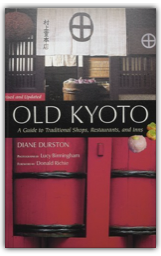

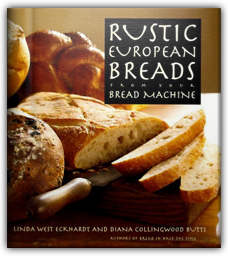
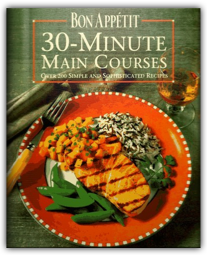

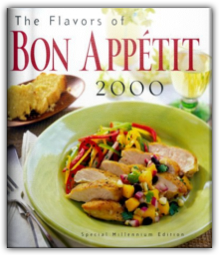
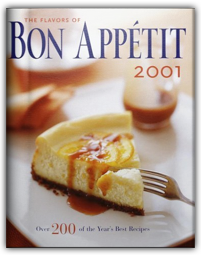
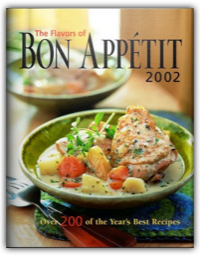

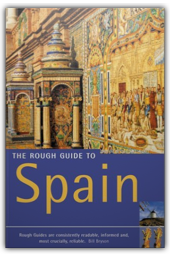






 Made with Delicious Library
Made with Delicious Library